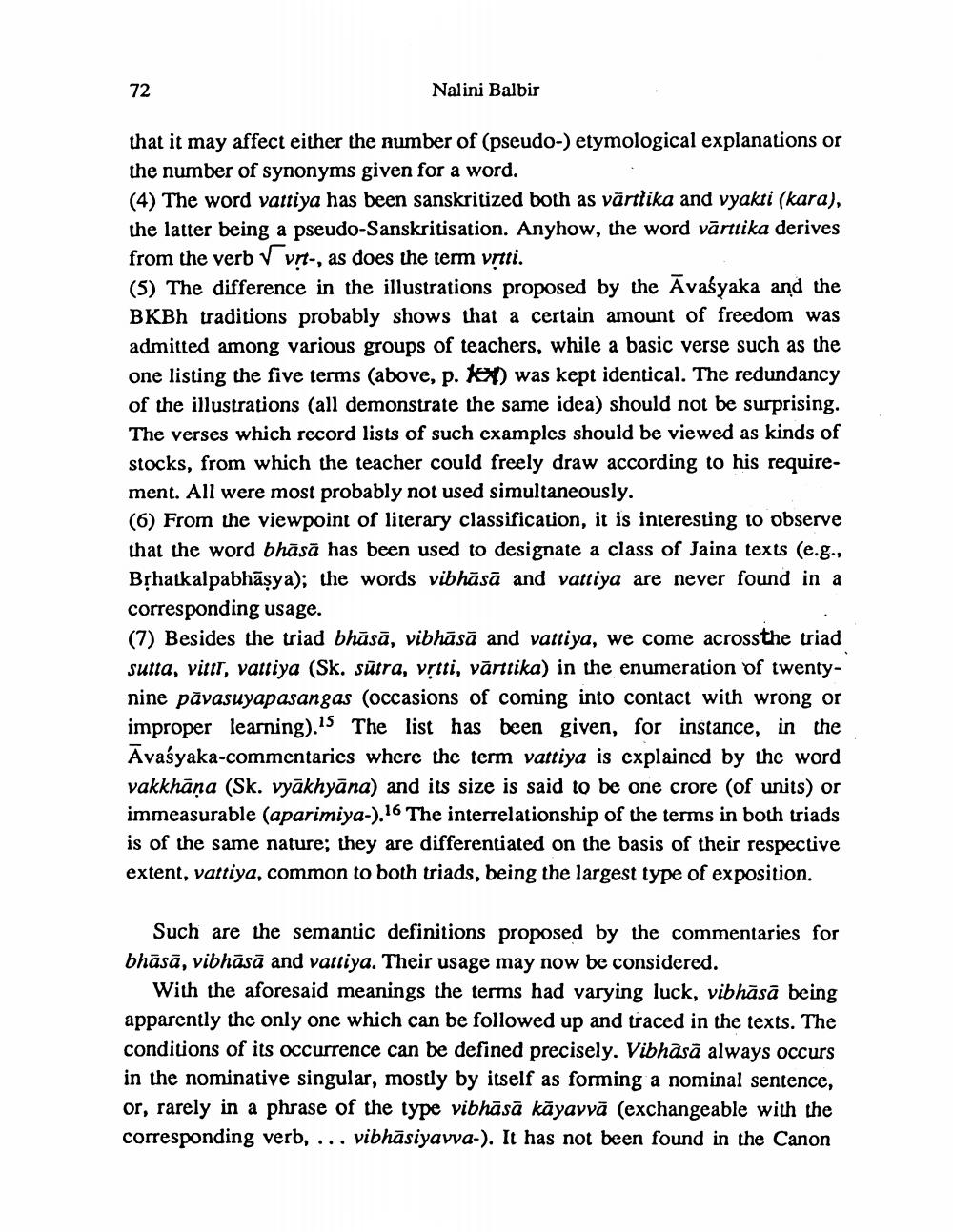Book Title: Jaina Exegetical Terminology Pk Vibhasa Detailed Exposition Author(s): Nalini Balbir Publisher: Nalini Balbir View full book textPage 6
________________ 72 Nalini Balbir that it may affect either the number of (pseudo-) etymological explanations or the number of synonyms given for a word. (4) The word vattiya has been sanskritized both as vārtika and vyakti (kara), the latter being a pseudo-Sanskritisation. Anyhow, the word vārttika derives from the verb v vrt-, as does the term vrtti. (5) The difference in the illustrations proposed by the Āvaśyaka and the BKBh traditions probably shows that a certain amount of freedom was admitted among various groups of teachers, while a basic verse such as the one listing the five terms (above, p. 1) was kept identical. The redundancy of the illustrations (all demonstrate the same idea) should not be surprising. The verses which record lists of such examples should be viewed as kinds of stocks, from which the teacher could freely draw according to his requirement. All were most probably not used simultaneously. (6) From the viewpoint of literary classification, it is interesting to observe that the word bhāsā has been used to designate a class of Jaina texts (e.g., Bịhatkalpabhāşya); the words vibhāsā and vattiya are never found in a corresponding usage. (7) Besides the triad bhāsā, vibhāsā and vattiya, we come acro sthe triad sutta, vitit, vattiya (Sk. Sūtra, vrtti, vārtika) in the enumeration of twentynine pāvasuyapasangas (occasions of coming into contact with wrong or improper learning).15 The list has been given, for instance, in the Avasyaka-commentaries where the term vatriya is explained by the word vakkhāna (Sk. vyākhyāna) and its size is said to be one crore (of units) or immeasurable (aparimiya-). 16 The interrelationship of the terms in both triads is of the same nature; they are differentiated on the basis of their respective extent, vattiya, common to both triads, being the largest type of exposition. Such are the semantic definitions proposed by the commentaries for bhāsā, vibhāsā and vattiya. Their usage may now be considered. With the aforesaid meanings the terms had varying luck, vibhāsā being apparently the only one which can be followed up and traced in the texts. The conditions of its occurrence can be defined precisely. Vibhāsā always occurs in the nominative singular, mostly by itself as forming a nominal sentence, or, rarely in a phrase of the type vibhāsā kāyavvā (exchangeable with the corresponding verb, ... vibhāsiyavva-). It has not been found in the CanonPage Navigation
1 ... 4 5 6 7 8 9 10 11 12 13 14 15 16 17 18
